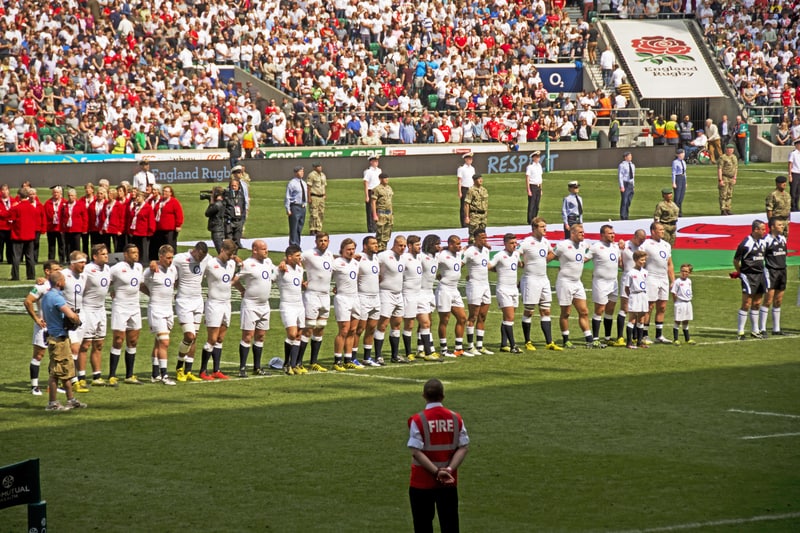 I. Introduction
I. Introduction
Rugby and football are two popular team sports that have captured the hearts of millions of fans around the world. Rugby, known for its physicality and intense gameplay, and football, with its strategic plays and skillful ball handling, may seem similar at first glance. However, understanding the origins of these sports is crucial to fully appreciate their differences and unique characteristics. In this blog post, we will delve into the rich histories of rugby and football and trace their beginnings.
II. Rugby: The Birth of a Game
A. The origins of rugby
- Ancient origins and early influences
Rugby’s origins can be traced back to ancient times, with various ball games played across different civilizations. Ancient Egyptians, Greeks, and Romans all had their versions of ball games that involved kicking or carrying a round ball. These games laid the foundation for the development of modern sports like rugby. - The development of the Rugby School game
Rugby as we know it today can be largely attributed to the Rugby School in England. In the early 19th century, a pivotal moment occurred when a Rugby School student, William Webb Ellis, famously picked up the ball during a football match and ran with it. This incident sparked the inception of a new game that allowed players to both kick and carry the ball.
B. The early rules and variations
- The Cambridge Rules
In the early years of rugby, there were no official rules governing the game. Different schools and regions had their own variations, leading to confusion and disagreements on the field. One significant attempt to establish rules was the Cambridge Rules, which were developed in 1848. These rules emphasized teamwork, fair play, and the importance of scoring goals rather than just touching down the ball. - The formation of the Rugby Football Union (RFU)
To bring cohesion to the game and standardize the rules, the Rugby Football Union (RFU) was formed in 1871. The RFU introduced a set of regulations that ensured consistency and fairness in rugby matches. This pivotal moment laid the foundation for modern rugby and shaped the future of the sport.
III. Football: Tracing Its Beginnings
A. Origins and early manifestations
- Ancient origins and ball games Similar to rugby, football has ancient origins that can be traced back to civilizations around the world. The Chinese, Greek, and Roman civilizations all had their own variations of ball games played with feet, hands, or a combination of both. These early manifestations of football laid the groundwork for the game we know today.
- The emergence of medieval football During the Middle Ages, football took on a different form in Europe. It became a popular pastime played by villagers, where entire villages or rival groups would engage in large-scale games. These games often involved large numbers of players and lacked any standardized rules, resulting in chaotic but exciting matches.
B. The influence of public school football
- Various regional variations Public schools in England played a significant role in shaping the development of football. Each school had its own set of rules and variations, which led to regional differences in gameplay. The lack of uniformity posed challenges and hindered the growth of the sport on a larger scale.
- Attempts to standardize the game With the increasing popularity of football, there were growing calls for standardization. In 1863, the Football Association (FA) was established in England with the aim of creating a unified set of rules. These rules emphasized ball control with feet and prohibited the use of hands, laying the groundwork for the modern game of football.
IV. The Divide and Conquest
A. The split between rugby and football
Rugby’s adoption of the Rugby Union code Rugby, on the other hand, took a different path. In 1871, the Rugby Football Union (RFU) was formed in England, adopting the Rugby Union code as its set of rules. This code allowed for more physicality and contact in the game compared to football. Rugby Union quickly gained popularity, especially in the public schools and universities of England.
B. The formalization of rules and structures
- The Laws of the Game for Football With the establishment of the FA, formal rules known as the Laws of the Game were put in place to govern football. These rules covered various aspects of the game, including the size of the field, the number of players, and the methods of scoring. The Laws of the Game for football provided a clear and standardized framework for the sport, allowing for more consistent play across different regions.
- The growth and organization of rugby Rugby also experienced growth during this time, with the RFU working to organize and expand the sport. The RFU established a set of rules called the Laws of Rugby Union, which outlined the regulations for playing the game. The organization of rugby helped to popularize the sport and establish it as a distinct and separate entity from football.
V. Rugby vs. Football: Similarities and Distinctions
A. Gameplay and objectives
- Team size and goal-scoring methods Both rugby and football involve two teams competing against each other to score goals. However, there are differences in team size and goal-scoring methods. In football, teams typically consist of 11 players, while in rugby, teams are made up of 15 players. Additionally, in football, teams score goals by getting the ball into the opposing team’s net, while in rugby, teams score points by carrying the ball over the opposition’s try line or kicking it through the posts.
- The role of physicality in each game Physicality plays a significant role in both rugby and football, but the extent and nature of physical contact differ between the two sports. In football, physical contact is allowed but limited to certain actions. Tackles are intended to disrupt the opponent’s possession of the ball and can only be made against an opponent who is in possession of the ball. In rugby, physical contact is more prominent, with players engaging in tackling, rucking, and mauling to gain possession of the ball.
B. Cultural and regional differences
- Global popularity and regional preferences Football, also known as soccer, has achieved a remarkable level of global popularity. It is played and followed by millions of people worldwide and has become deeply ingrained in many cultures as a unifying force. Rugby, while popular in certain regions, does not enjoy the same level of global appeal.
- Influence and societal impact of each sport Football and rugby have had different societal impacts in the regions where they are most popular. In many parts of the world, football has become more than just a sport. It has become a cultural phenomenon, influencing music, fashion, and even politics. The World Cup, the most prestigious tournament in football, has the power to bring nations and cultures together. Rugby, on the other hand, has a smaller but dedicated following in its strongholds.
In conclusion, the split between rugby and football can be attributed to the different forms of the game that emerged in the 19th century. The formalization of rules and structures in both sports helped to establish them as distinct entities. While there are similarities in gameplay and objectives, such as scoring goals, there are also differences in team size and physicality. Football has achieved global popularity and has had a significant societal impact, whereas rugby, while equally loved in certain regions, has a more localized following.




